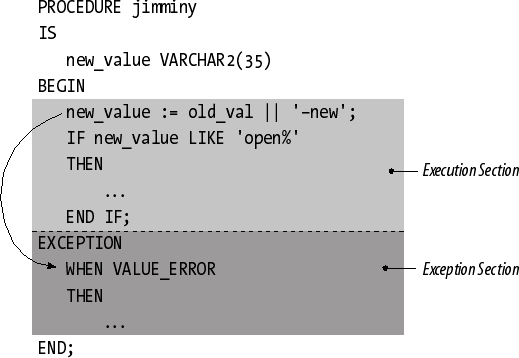Exception-Handling Concepts and Terminology
In the PL/SQL language, errors of any kind are treated as exceptions—situations that should not occur—in your program. An exception can be one of the following:
An error generated by the system (such as “out of memory” or “duplicate value in index”).
An error caused by a user action.
A warning issued by the application to the user.
PL/SQL traps and responds to errors using an architecture of exception handlers. The exception handler mechanism allows you to cleanly separate your error processing code from your executable statements. It also provides an event-driven model, as opposed to a linear code model, for processing errors. In other words, no matter how a particular exception is raised, it is handled by the same exception handler in the exception section.
When an error occurs in PL/SQL, whether it’s a system error or an application error, an exception is raised. The processing in the current PL/SQL block’s execution section halts, and control is transferred to the separate exception section of the current block, if one exists, to handle the exception. You cannot return to that block after you finish handling the exception. Instead, control is passed to the enclosing block, if any.
Figure 6-1 illustrates how control is transferred to the exception section when an exception is raised.

Figure 6-1. Exception-handling architecture
There are, in general, ...
Get Oracle PL/SQL Programming, 5th Edition now with the O’Reilly learning platform.
O’Reilly members experience books, live events, courses curated by job role, and more from O’Reilly and nearly 200 top publishers.

